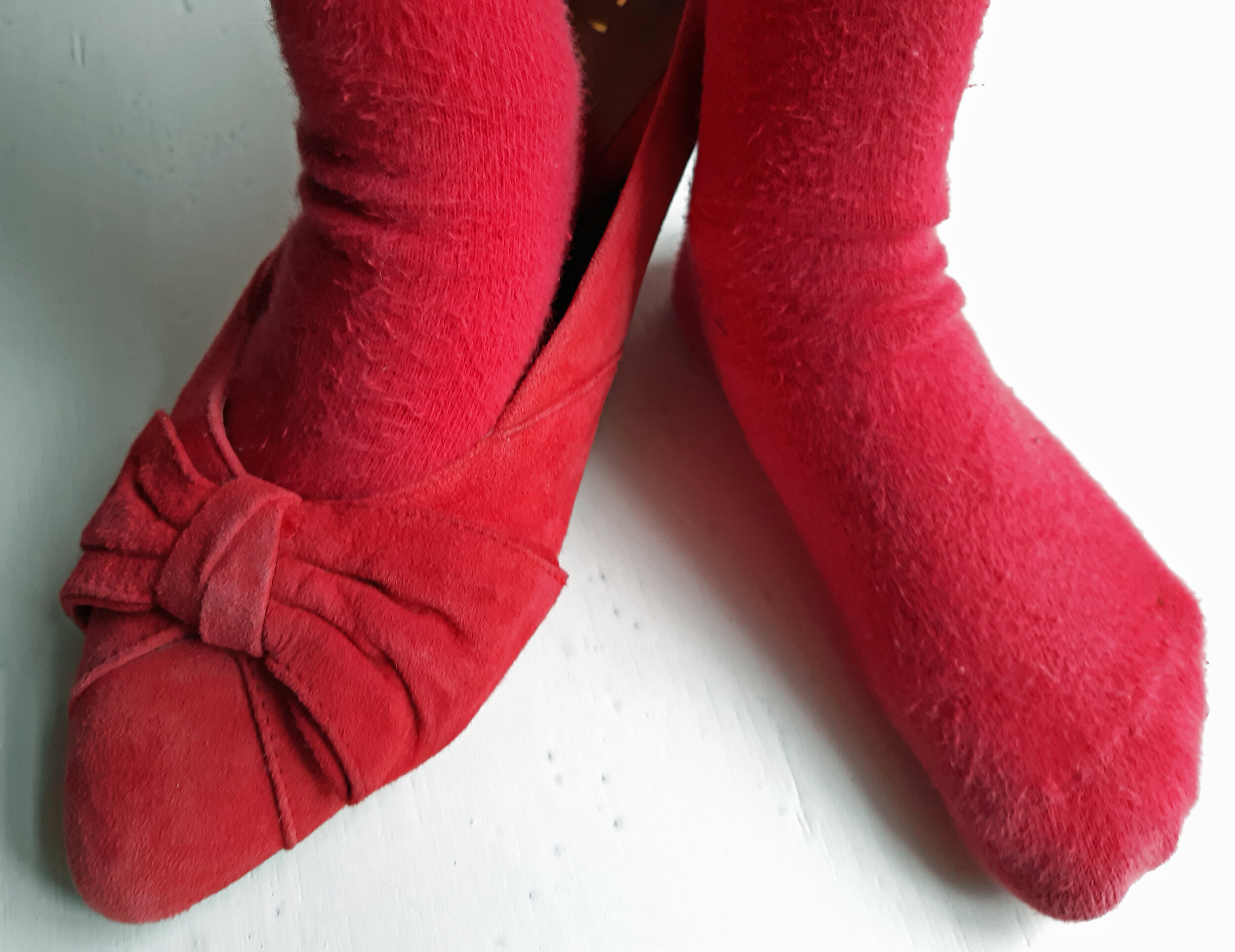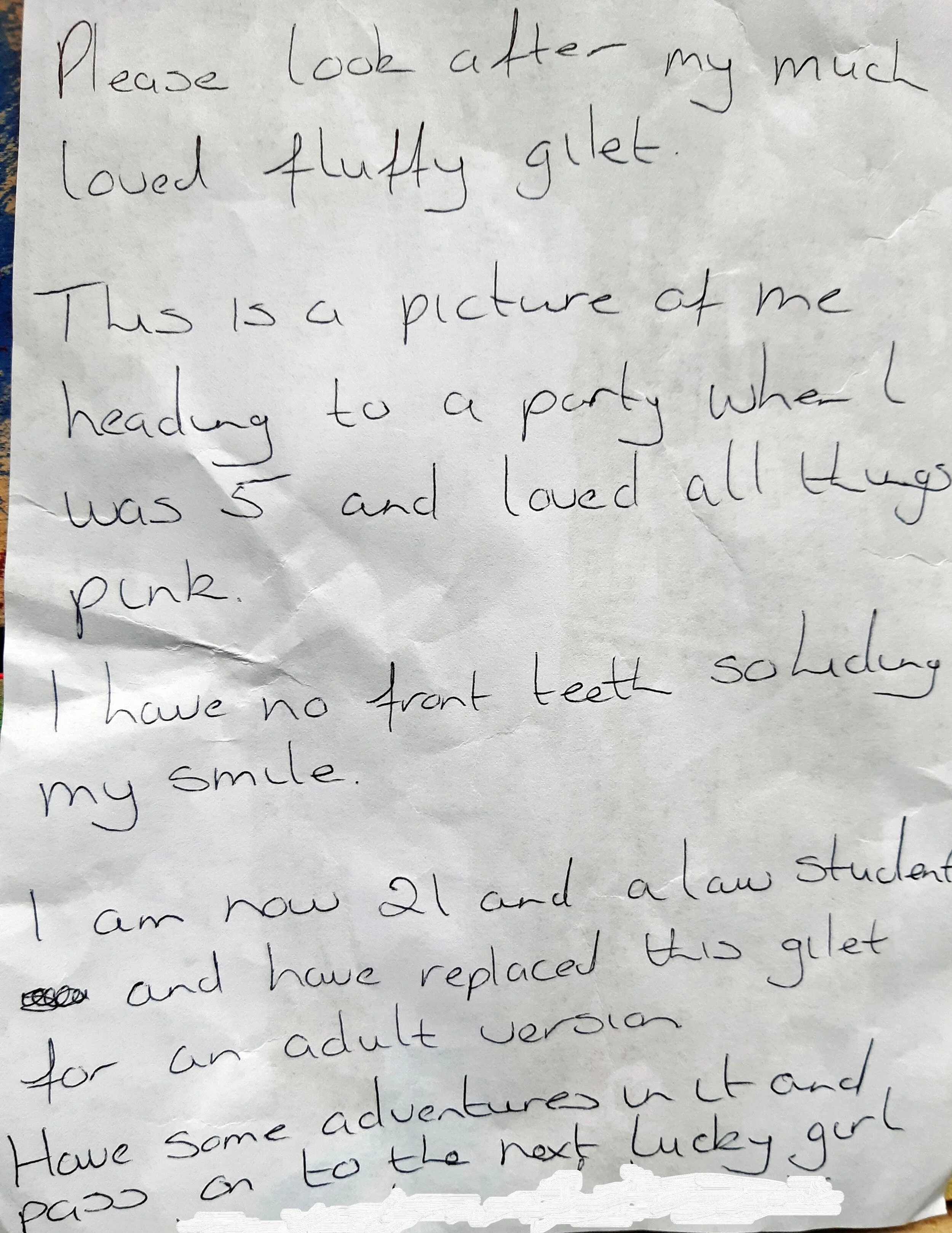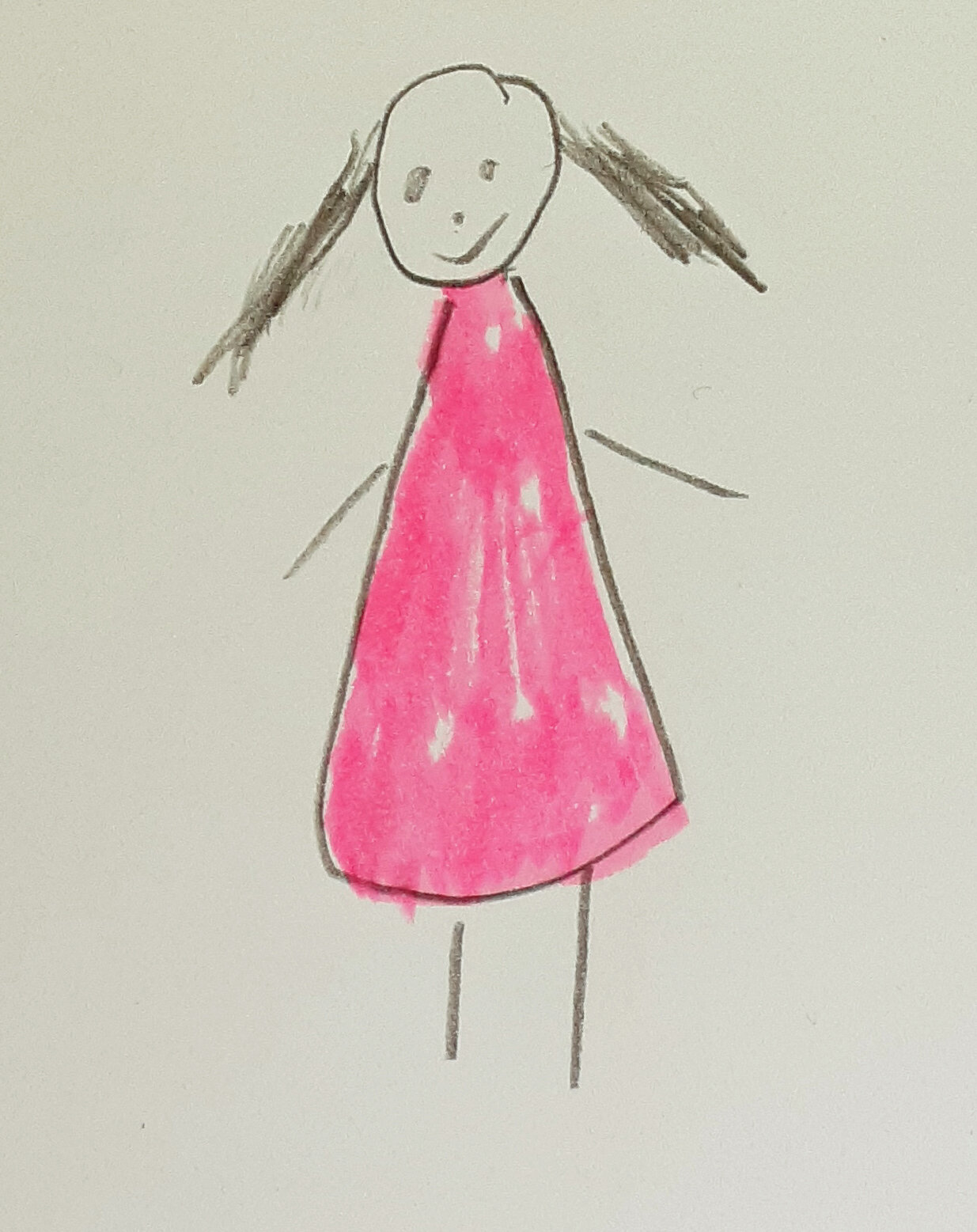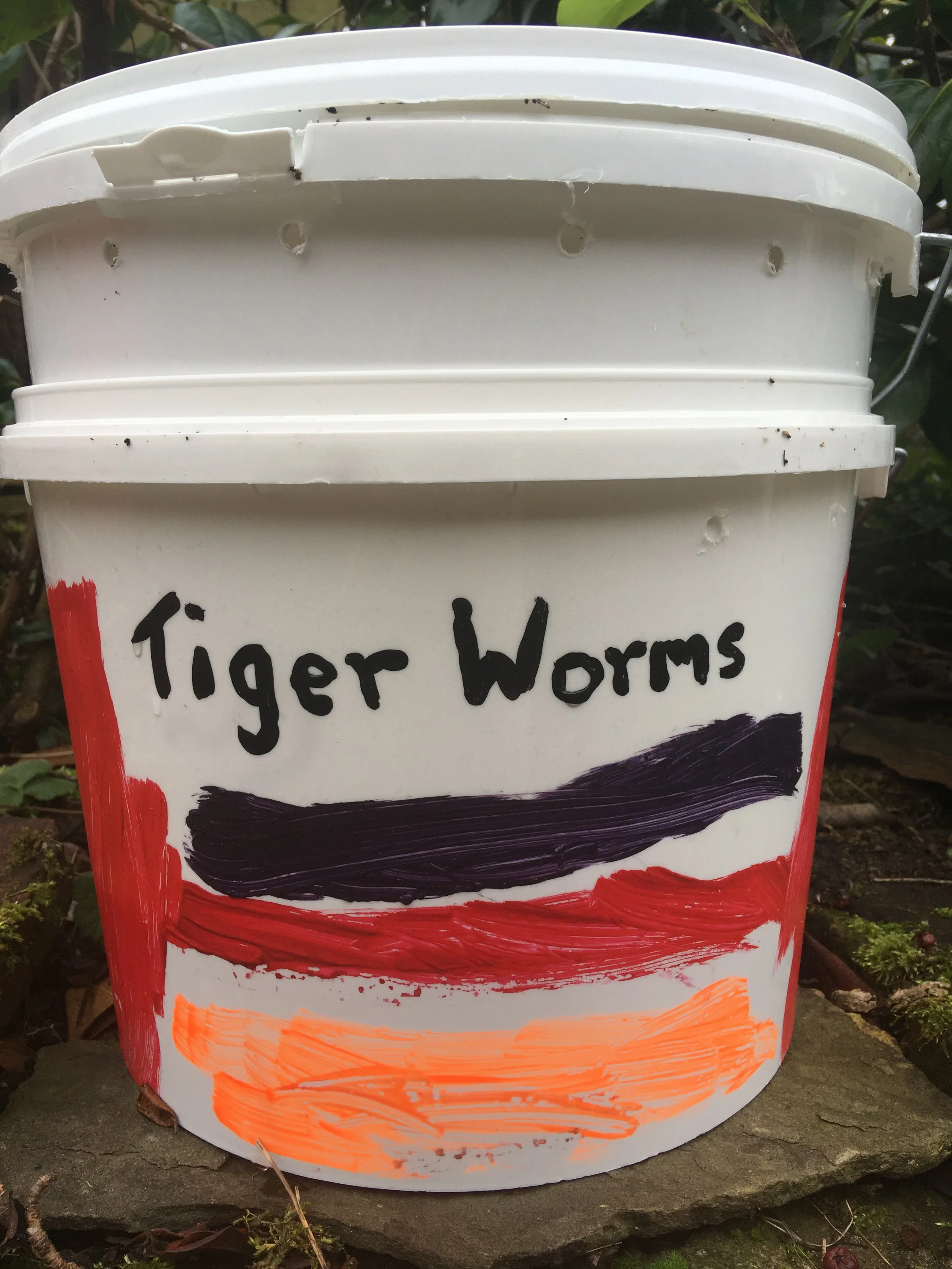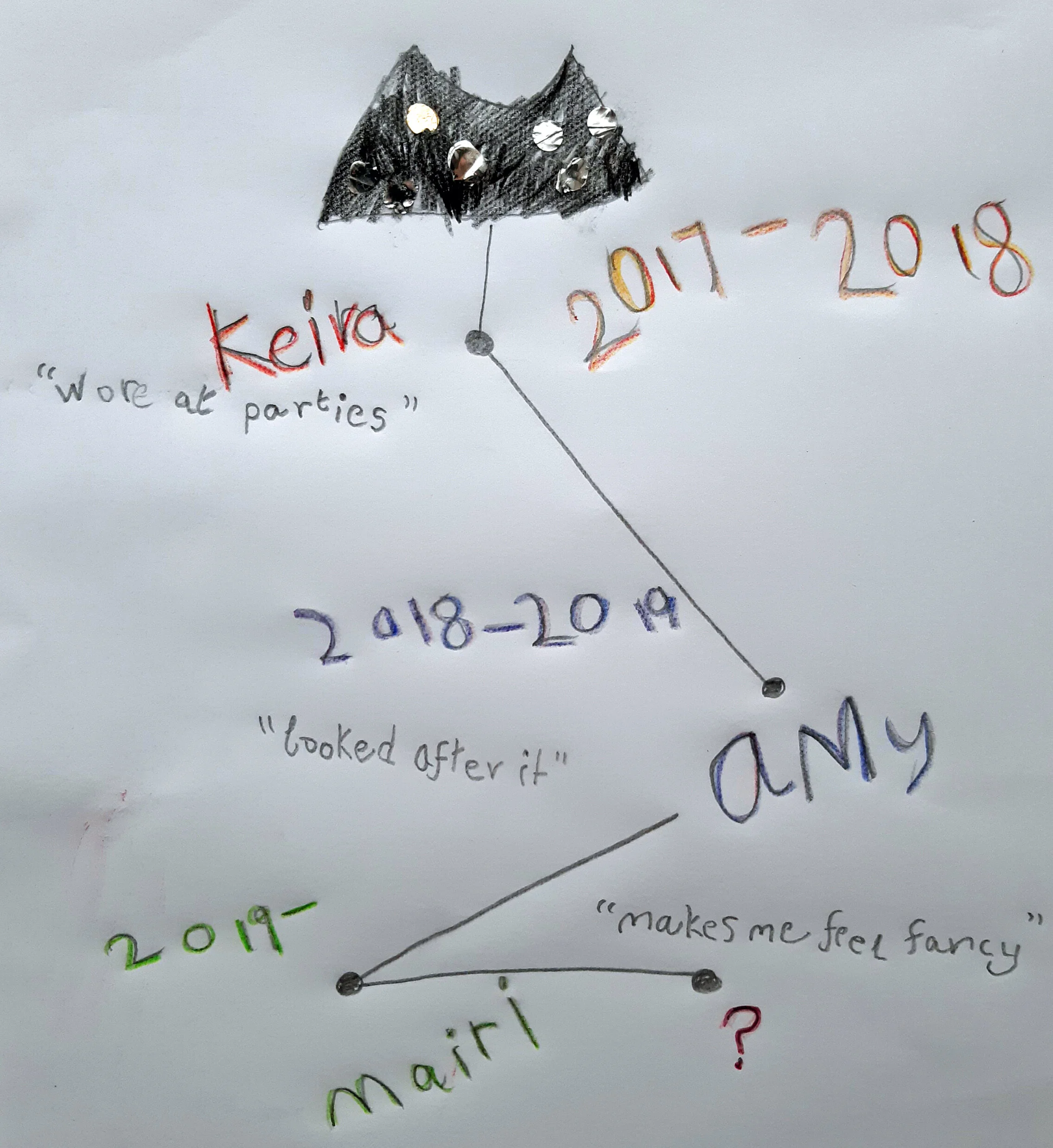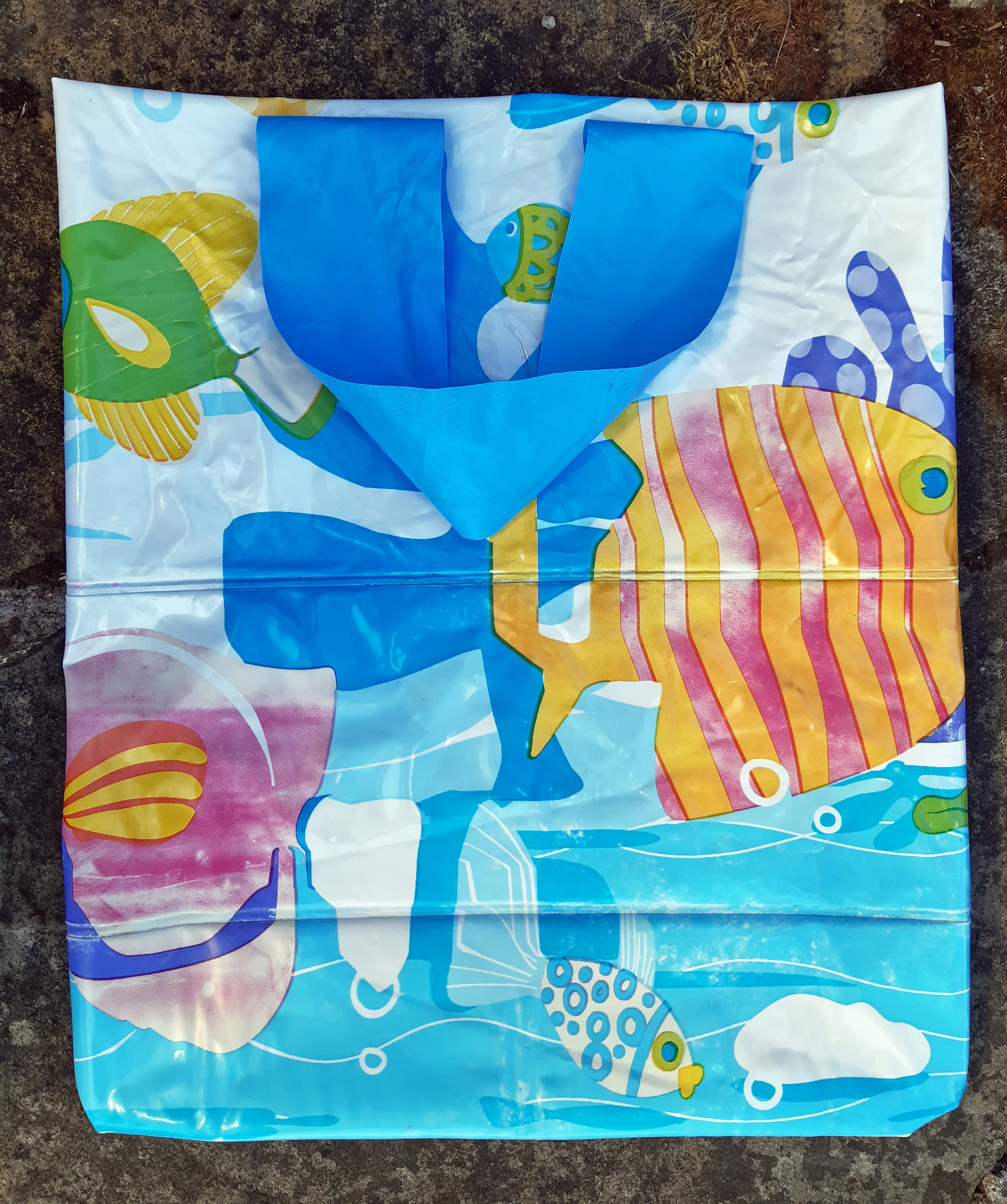How we dress
Finger knitting. Suitable from age 4 upwards and easy as pie (as well as safe - no needles). Chunkier wool looks best, I think. Can be turned into bracelets, bibs, blankets, scarves... anything. Nice intro for your child to making their own clothes and accessories, even if they only fit their toys. Really straightforward video here for 4-fingered knitting.
Pack a bag. Ask your child to help you sort out your wardrobe and rather than dispatch the clothes you never wear (too tight, too flamboyant, never liked) to the charity shop, see if your child might want to wear them when they are a grown up. Charity shops often can’t resell what is donated, especially if it’s poor quality. Have your camera handy for a bit of dressing up as you go. Pack one of those beautiful storage bags and tell them they can open it when they're 16. Then you can help them sort out their clothes to pass on to other children you know. Talk about buying less, buying second-hand, buying better quality. And about taking care of clothes so they can be passed on.
Dress each other up. A great lesson in figuring out your own style and not minding what other people think. My 6-year-old chose a cracking combination of colours for me + furry rarely-worn gilet, and did my make-up too. She was disappointed I wasn’t thrilled with her choices. I’ve always let her choose what to wear even if it means she overlooks some of the Boden beauties we’ve been given. My theory is that if she can develop her own style in these early years, it might steel her against the wasteful fashion trends churned out almost weekly, later on. I dare you to then go to the shops, smeared lipstick and all.
Visible mending. I have a once-magnificent cardigan now full of moth holes. It would be hard to disguise the mending so... unless it looks like you've spilt your breakfast, anything goes. Remember, mending is a political act against disposable fashion! This sweetie appealed to my 5-year-old.
Celebrating (and normalising) preloved clothes. Next time you buy clothes for your child, see if you can find them ‘preloved’ on ebay, gumtree, preloved.co.uk, loopster.co.uk or sweetpeaprevlovedclothes.co.uk to name but a few websites. Then ask the previous (child) owner to write a note to your child about the great adventures they’ve had in the item you’re buying. With this letter to my daughter, the lady had even included a photo.
Second-hand uniform dress up. How many pieces of second-hand uniform is my 6-year-old wearing? 14. And these are just items in her size. She couldn’t get up when she fell to the ground laughing. But there is so much more than this sitting in the second-hand uniform cupboard at her school. See if your child’s class might run a competition: one or two volunteers dress up in as much second-hand uniform as possible and the classmate who guesses how much clothing they are wearing gets a prize. Post some pictures in the school newsletter. Since second-hand items are much cheaper or even free than brand new, purchasing more expensive organic alternatives of items you can’t get hold of, then becomes affordable.
Combining doing good with craft. If your child likes crafts, introduce them to 'craftivism', which puts craft activities in the service of trying to influence others. The fabulous Craftivist Collective have several 'kits' that your crafty child will love including one focused on the fashion industry, which asks you to consider the working conditions of the workers who make the garments we buy. You can either buy the pack (it makes a great gift) or get inspired to do it yourself here. You're combining doing something good with some creative fun. Bingo.
Who made my clothes? My 5 year old picked her favourite unicorn sequin t-shirt. We discussed where it was made and who might have made it (no grisly details). China, India and Bangladesh are among the worst offenders when it comes to child labour so since it was made in China, there's a chance that a child sewed her fiddly sequins, best suited to small fingers. My daughter thought the child was probably 10, a girl, and would prefer to go to school rather than work in a factory. We will ask the brand to reassure us that no child labour was used. More info about child labour here and read here about this young woman’s incredible journey from child labourer to global ambassador for change.
Restyling clothes you already have. Breathe new life into your clothes by wearing them differently. To make the point, go completely overboard and defy even the most basic of conventions. Get your child to try the following: inside-out top or dress; back-to-front cardigan, jumper or trousers; mismatched shoes and socks; pants over trousers; tights or skirt on your head; and socks on your hands.Some things might be impractical but what the heck. You might need to join in too and take lots of pictures.
Who made my clothes? Textile factory workers are not being paid enough to live on. Talk to your child about what this means - more info about a ‘living wage’ here. And this isn’t just happening abroad but also in Leicester too, for example. Get teddy involved (ours is looking suitably displeased) and dress them up in an item of clothing you want to ask a brand about. Explain to your child how companies get embarrassed if lots of people tell them off online (use the hashtag #whomademyclothes) and that this can lead to change.
Learning about sheep. Wear wool? Eat lamb? Let’s see what we can find out about sheep. Start here. If you can, find some sheep and observe them. Talk to them, show them stuff. We tried a mirror to test their reactions. In an attempt to ‘see’ the animals that we otherwise treat solely as a source of meat and/or fibre, we sang to some cows last year because I’d read that they like music. Sheep, it appears, are as interesting and individual as cows, which I had not appreciated. You think of other species as being one thing or another rather than accommodating a range of personalities and degrees of intelligence, much like us. Fascinating.
Scavenger hunt. Young kids love scavenger hunts. This one will get them thinking about where their clothes have come from and is an easy intro to guardianship rather than ownership of clothes. You can include a mixture of the following: 1. An item you’re excited to pass on 2. Your favourite hand-me-down 3. Something that is 100% cotton (not easy - lots of cotton items have synthetic elastane in) 4. An item that has been repaired 5. Something that doesn’t need washed very often (and ask them why they have chosen the item; darker colours and natural fibres are the best for this!) 6. An item you think [pick someone from the opposite sex] might like, to get them thinking about gender neutral clothing. 7. Something made in India or China 8. Something that if buried in the soil, the worms wouldn’t want to eat.
Photo credit: "Sugar Coated" photo by Stephen Wong, modelled by Sienna & Alice hair & makeup by Kerry Jane Bailey and team. All outfits created by Marina DeBris. All were made from ocean pollution and are from her collection "Beach Couture: A Haute Mess".
Tie dye! It is with great excitement that I can announce that lowly white and red onion skins produce beautiful deep orange and maroon colours when boiled. The dye works best on soft cotton. Boil 10 onion skins for an hour and then add your material to soak. If left overnight you get the deepest colours. If you don't want the colour to wash out, boil the material for an hour before dyeing it, in a solution of 1 part vinegar to 4 parts water. Hand wash afterwards in cold water only, no detergent.
Upcycled men's shirt. These pyjama trousers, depending on the size of the men's shirt, could be for 0-3 years of age. You don't need a sewing machine and they don't have to be perfect. Just a bit of elastic in the waist or some elasticated material to make a waistband (these are called harem trousers). Men's shirts, once worn at the neck or sleeves, just get downcycled in textile banks; they can't be resold by charity shops. A step-by-step guide here.
What are clothes made from? A quick, fun way to show children one of the important differences between synthetic and natural fibres (that the former never breaks down) is to burn them. Gather a few samples of materials: pure cotton (Dad’s old shirt), pure wool (we used knitting wool), 100% synthetic (a torn fancy dress costume), cotton blend (a holey sock) and a wool and viscose blend (a moth-munched cardigan). See how the natural fibres turn to dust while the synthetic ones harden and cannot be crushed. Note the differences in smell too.
Raising tiger worms. You might wonder what this has to do with the clothes we wear but of course tiger worms, like all soil organisms, will only eat natural materials. So as well as feeding your worms kitchen scraps you can also cut up your old pants and socks, so long as they contain only cotton (cut out the plastic elastic bits). An unforgettable lesson on biodegradability. For how to make a tiger worm home, why it’s important and where to buy your worms, see The Urban Worm. And for some easy reading on how fabulous all worms are, read The Bug Life’s overview. PS Tiger worms are native to the UK even though they sound very exotic!
The 3-outfit challenge. Can you and your child pick just 3 outfits each to rotate for one month? (Excluding nightwear, swimwear, exercise gear, fancy wear). You can set rules around swapping out items - perhaps limit it to 1 or 2 - during the challenge. Tidy away what you won't be wearing. Talk to your child about how much novelty we really 'need' in our wardrobe, how quality clothes last, that we have to take care of what we love. My 6 year old returned to her wardrobe with renewed enthusiasm for some items and a decision to pass on other things she hadn't missed. Just don't be disappointed if they choose cutesy over classic items. Gotta let them find their own style.
Denim toy bucket. I couldn't keep my favourite jeans going any longer - only so many times you can repatch the bum - so I cut the bottom half of the legs off to make rather pleasing toy buckets (can be used for stationery, jewellery, make-up, cotton reels/wool balls…). And in a post-toy household you just pop them into the textile bank if no longer wanted. Video here (NB I sewed the bottom instead of using glue).
Clothes ancestry project. Most days, my 6 year old wears a sparkly black skirt that she inherited from a neighbour's daughter. We decided to trace the skirt's 'ancestry' and see what adventures it had been on before coming into our lives. The neighbour's daughter 'loved it so much that she took much better care of it than her other clothes'. The girl who wore it before that 'loved wearing it for friend's birthdays, school parties and discos because it sparkled so nicely'. The previous owners have enjoyed hearing how much my daughter loves it too. Where does it go next??
Celebrating the real fashion heroes. Should fashion designers (and models) be getting all the praise in the magazines? See if you can think of everyone involved in the process of making the clothes that we so love wearing and with your child decide on who else should get some of the limelight. The sheep or cotton farmers, those who turn the raw material into fabric, who dye it, who sew the clothes, who transport it to us, who sell it? How about those who taught you how to repair and look after your clothes? Get your child to design a front cover by hand or with editing software [as pictured]. I used Kapwing but there are others out there.
Photo credit: Anchal Project, (courtesy of Fashion Revolution)
Upcycled pool bag. Made from a defunct paddling pool! My 6 year old helped wash the pool and it was fun brainstorming what we could turn the pool plastic into, to keep the happy paddling memories (would otherwise be rubbished). Lots of other creations waiting for another day - apron, washing bag, messy play table cloth, pencil case...
The Stinky Challenge. On our current trajectory of water consumption, we are in danger of running out. The average washing machine uses 50 litres of water per load - that would keep me hydrated for 15+ days. With your child pick 3 items of clothing each and keep a tally of how long you can wear them before you wash them. Decide on 5, 10 even 15 wears (doesn't have to be on consecutive days). Spot cleaning with a toothbrush/cloth allowed, badges/scarves can cover marks, roll up sleeves for grubby cuffs. You can also air items overnight and if needed (for grown ups), spray armpit area with perfume before wearing it again. Jeans can go in the freezer to freshen up. Yes really! How spotless do clothes really need to be for playing in? More info hereMore info here.
Fabrics guessing game. Get a cardboard box and make two holes on either side, large enough to fit your child's arms into (or simply blindfold them). Get your child to guess what food and crop waste can be turned into clothes. Think: pineapple stalks/leaves, orange peel, banana skins, sugar cane, rice straws, coconut husks, spoiled milk [pictured], mushrooms, cooked spinach (to imitate algae), manure... I know - amazing!! This teaches the importance of innovation – of always thinking of how to improve on how we do things. There are a few very driven innovators out there working some crazy magic with food and crop waste. Photo credit: QMilk, https://www.qmilkfiber.eu

